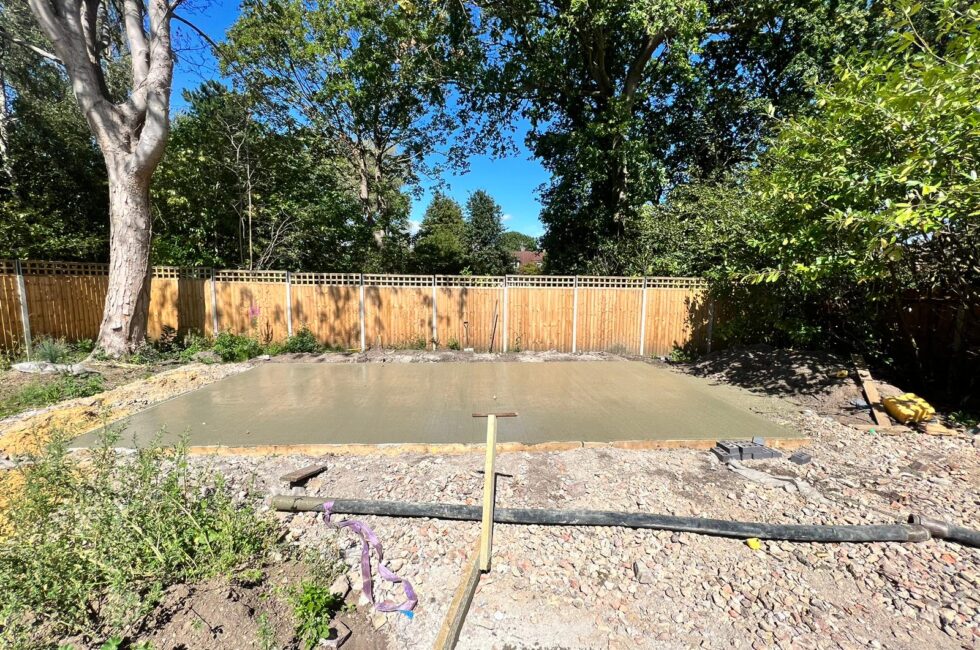- What is the best base for a garden room?
- What is the cheapest base?
- Do garden rooms need a concrete base?
- What is the alternative to a concrete slab for a garden room?
- How deep should a concrete slab be for a garden room?

Concrete raft with steel cages and bars. Insulation, screed and masonry plinth.
Garden Room Foundation Types: Concrete bases vs Ground Screws vs Concrete Piles vs Plastic grid System: The pros and cons of each| Type | Pros | Cons | Cost |
| Concrete Raft |
|
|
£££ |
| Ground Screws |
|
|
£££ |
| Concrete Pile Foundations |
|
|
££ |
| Plastic Grid System (ProBase) |
|
|
£ |
| EasyPad (concrete pads) |
|
|
££What would you like to do next? Find out how much a garden room costs. Find out how much a pod kit costs. Design your own garden room for free that will be installed by us. |

